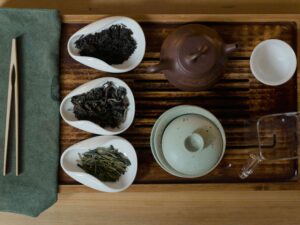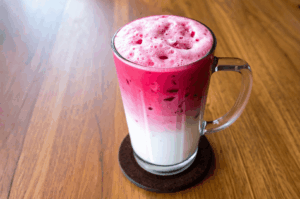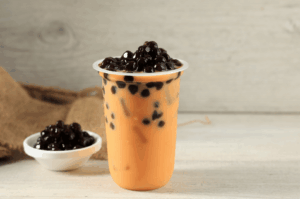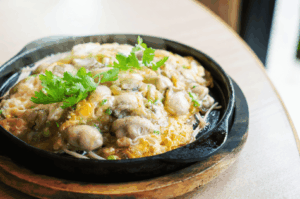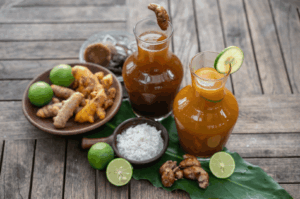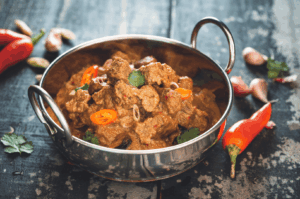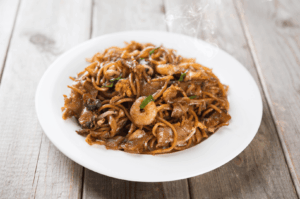
If you think eating dim sum is all about har gow and siu mai, think again. Authentic Cantonese dim sum is a dazzling showcase of Chinese culture, filled with an array of flavors, textures, and traditions that run much deeper than the classics. For both seasoned aficionados and first-time food explorers, venturing beyond the familiar and into a genuine Chinese tea house can feel like entering another world.
This comprehensive dim sum guide isn’t just about what you’ll see on the menu—it's about understanding tea culture, the ritual of yum cha, ancient and modern etiquette, and those lesser-known dishes that reveal the true artistry of dim sum chefs. Whether you’re sipping oolong from a tiny tea cup or sampling delicate skin soup dumplings straight from a bamboo steamer, you’re engaging with hundreds of years of Chinese culinary history.
A Brief History: Dim Sum and Chinese Tea Culture

The history of dim sum is intimately linked with Chinese tea culture, stretching as far back as the Tang Dynasty. In southern China, especially in Guangdong province, travelers and townsfolk would gather at tea houses to unwind, drinking tea and sharing small plates. Though the Chinese tea ceremony was originally revered for its meditative rituals—sometimes practiced by Buddhist monks seeking enlightenment—over time, offering tea and accompanying snacks (dim sum) became an integral part of social life.
By the Song Dynasty and later the Jin Dynasty, tea houses flourished. In these vibrant venues, dim sum became much more than food; it was a symbol of hospitality, family, and community. The custom of yum cha (飲茶, “drinking tea”) was born—a tradition that, to this day, brings people together over pots of hot water, aromatic tea leaves, and a parade of delicious dim sum dishes.
Steamed, Fried, Baked, and Sweet: The Main Categories of Dim Sum Menu
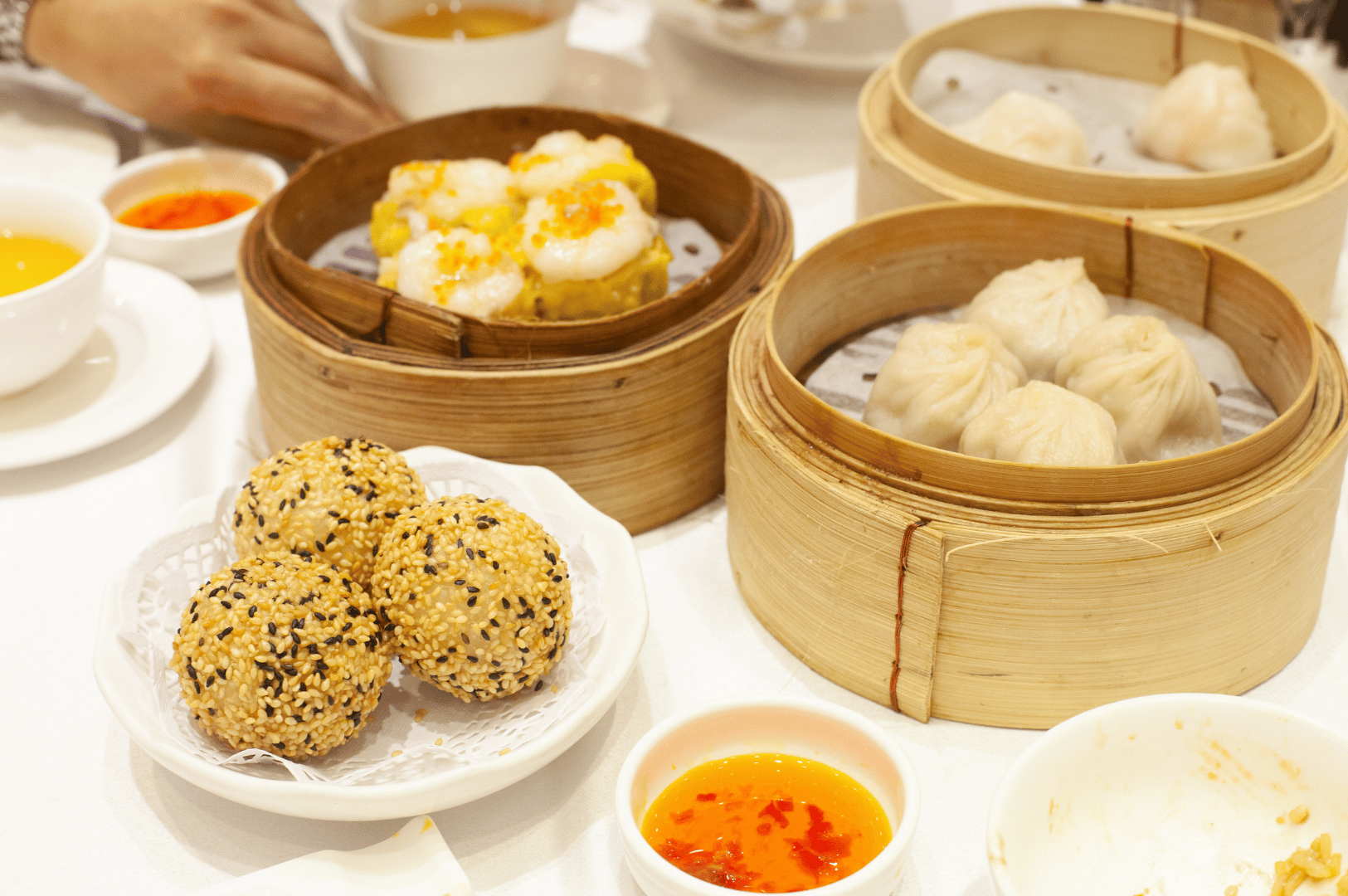
Dim sum is celebrated for its incredible variety, with each restaurant offering a unique menu brimming with options. Understanding the main categories helps every delicious bite make sense:
Steamed Dim Sum
Served fresh from the bamboo steamer basket, these dishes are the soul of authentic cantonese dim sum. Delicate skin dumplings like har gow (shrimp dumplings), soup dumplings (xiao long bao), and siew mai (pork dumplings with minced pork and shrimp) showcase gentle, clean flavors. Another must-try is lo mai gai—sticky rice stuffed with chicken, Chinese sausage, mushrooms, and sometimes salted egg, wrapped and steamed inside lotus leaves for an earthy aroma.
Fried Dim Sum
When you crave golden brown crunch, turn to fried offerings. Think taro croquettes stuffed with minced pork, savory spring rolls, and Wu Gok (deep-fried taro dumplings) whose exterior shatters at first bite. Cheung fun (rice noodle rolls) sometimes arrive pan-fried, filled with crispy fried dough for a delightful contrast.
Baked Dim Sum
With roots in both Chinese and European technique, baked dim sum dishes are a blend of tradition and innovation. Char siu bao (barbecue pork buns) are sometimes baked with a sweet glaze, producing a slightly sweet and shiny crust. The famous Hong Kong-style egg tarts are here too—crispy, flaky, and filled with silky custard, always the perfect sweet end to a meal.
Sweet Dim Sum
Sweetness in Cantonese cuisine is subtle and refined. Besides egg tarts, try nai wong bao (steamed custard buns bursting with warm, creamy filling) or jin deui (sesame seed balls with sweet bean paste). Some menus feature mango pudding or almond jelly, offering a light and refreshing finish to all the tea and savory delights.
Regional Variations: Dim Sum from Guangdong to the World
Although dim sum originates from Guangdong province, its flavors and forms have journeyed far beyond southern China.
Guangzhou
Birthplace of authentic Cantonese dim sum, Guangzhou’s tea houses prize mastery of classic techniques and premium, fresh ingredients. Eating dim sum here means tasting the blueprint upon which all others are based: subtle, elegant, and always in harmony with drinking tea.
Hong Kong
Hong Kong dim sum restaurants are famed for their speed, creativity, and opulence. Here, chefs are not afraid to push boundaries, blending the old and new—think black truffle siew mai or soup dumplings with delicate gold leaf.
International Chinatowns & North China
As dim sum traveled along with Chinese diaspora, it found new shapes in cities across the globe. Internationally, you may spot local ingredients on the menu, hybrid creations designed to entice a broader crowd, and a wider influence from north China. In all cases, the spirit of sharing and communal yum cha remains constant.
Dim Sum Etiquette and Tea Ceremony Essentials
Dim sum isn't just about the food—it's about the full culinary ritual, from the teapot to the chopsticks.
Ordering: Classic dim sum restaurants may have roving carts, with servers describing each dim sum dish as they wheel it by. Alternatively, many modern spots use order sheets, where diners check off desired plates. If you’re keen to try all the tea or a specific delicacy like xiao long bao, order early—some items sell out fast.
The Role of the Tea Ceremony: Drinking tea is central to yum cha. From the careful selection of loose tea leaves to brewing hot water in a traditional yixing teapot, this ritual is steeped in Chinese tea ceremony lore. The pouring of tea for elders or in-laws is an act of respect, and in turn, it’s customary for the person served to tap their tea cups or the table, silently saying "thank you."
Table Manners and Chopsticks: Always use communal chopsticks or spoons when serving yourself from shared plates. Never stick chopsticks upright in your food—this is reserved for ancestral offering and considered bad luck in Chinese culture. Remember, dim sum is about togetherness, so serve others before yourself and keep the conversation flowing as freely as the tea.
12 Lesser-Known Dim Sum Dishes Every Adventurous Diner Should Try

Step up your dim sum game with these gems—each one proof of the cuisine’s astonishing variety. These aren’t always listed next to the famous har gow but are delicious reminders of the breadth of authentic Cantonese dim sum.
- Fung Jau (鳳爪) – Chicken Feet: Braised in a savory, slightly sweet sauce made of fermented black beans and oyster sauce, chicken feet are fall-apart tender and absorb all the flavor of the steamer basket.
- Lo Bak Go (蘿蔔糕) – Turnip Cake: Grated daikon (lo bak), rice flour, and minced pork or Chinese sausage combine into a soft block, steamed then pan-fried for contrast. Savory, golden brown, with hints of umami from dried shrimp.
- Wu Gok (芋角) – Taro Dumplings: Creamy taro surrounds a core of minced pork and shiitake mushrooms, then is deep-fried to filigree crispness.
- Cheong Fun / Cheung Fun (腸粉) – Rice Noodle Rolls: Silky sheets of rice noodles, steamed and rolled around shrimp, beef, or crispy dough. Sometimes soaked in a light, slightly sweet soy sauce.
- Lo Mai Gai (糯米雞) – Sticky Rice in Lotus Leaf: Glutinous rice, tender chicken, salty mushrooms, and sometimes salted egg, all wrapped and steamed in a lotus leaf. Every bite is infused with herbal aroma.
- Jin Deui (煎堆) – Sesame Balls: Hollow and golden brown, their exterior is crisp with sesame seeds, while the inside is chewy, encasing sweet bean paste.
- Ma Lai Go (馬拉糕) – Malay Steamed Sponge Cake: Airy and spongy, often with a caramel fragrance from brown sugar. Perfect when warm and eaten as the “first round” of sweets.
- Ngao Yuk Kau (牛肉球) – Beef Meatballs: Minced beef, water chestnuts, and coriander, steamed with a hint of tangerine peel and served with a side of Worcestershire sauce.
- Pai Gwut (排骨) – Spare Ribs: Chopped pork ribs steamed with garlic, black beans, and chilies, piping hot and aromatic.
- Nai Wong Bao (奶黄包) – Steamed Custard Buns: Bright white buns, pillowy-soft, bursting with oozy, rich custard flavored by egg yolk.
- Ham Sui Gok (咸水角) – Fried Crescent Dumplings: Glutinous rice dough with a savory pork filling; the outer skin is crisp and just slightly sweet from a touch of sugar.
- Zha Leung (炸两) – Fried Dough Wrapped in Cheung Fun: Fusion of textures—crispy fried breadstick (youtiao) bundled up in glossy cheung fun and doused in sauce.
Traditional Tea Pairings: Why Tea and Dim Sum Go Hand in Hand

No Cantonese dim sum meal is complete without a pot of steaming tea, integral for flavor and digestion. Each tea type brings out the different kinds of dim sum on your plate.
- Pu’er: Earthy and strong, this tea cuts through richness—ideal with pan fried or deep-fried dishes like taro dumplings.
- Oolong: Floral, semi-fermented, and versatile, pairs perfectly with everything from siew mai to cheung fun.
- Jasmine: Light and fragrant, best for shrimp dumplings or other seafood-forward dim sum.
- Boiling Water and Tea Leaves Ritual: The best restaurants use boiling water to warm tea cups, yixing teapot, and to start steeping, ensuring maximum aroma.
Chinese tea houses elevate the meal with gorgeous pots, delicate cups, and sometimes even a tea master performing a ceremony at your table. Drinking tea enhances the taste and refreshes the palate with each bite.
Modern Innovations: How Today's Chefs Evolve Dim Sum
From Hong Kong to major Chinese cities and internationally renowned dim sum restaurants, today’s chefs respect tradition while creating new sensations for modern diners. You might now spot soup dumplings (xiao long bao) with black truffle or gold dust, siew mai finished with abalone or foie gras, or egg tarts made with unusual sweet or savory infusions.
Pan fried plates and even classic chicken or pork dumplings can make appearances filled with Japanese rice, fusion sauces, or new sweet flavors. Baked golden brown buns with a sugar crust now vie for attention alongside all the traditional favorites, making each restaurant visit a journey through both history and innovation.
This creative spirit is central to Chinese culinary evolution: chefs honor ancestral recipes (sometimes passed down from the Tang Dynasty) while making them accessible and exciting for today’s foodies.
Explore Authentic Cantonese Dim Sum—And Go Beyond the Familiar
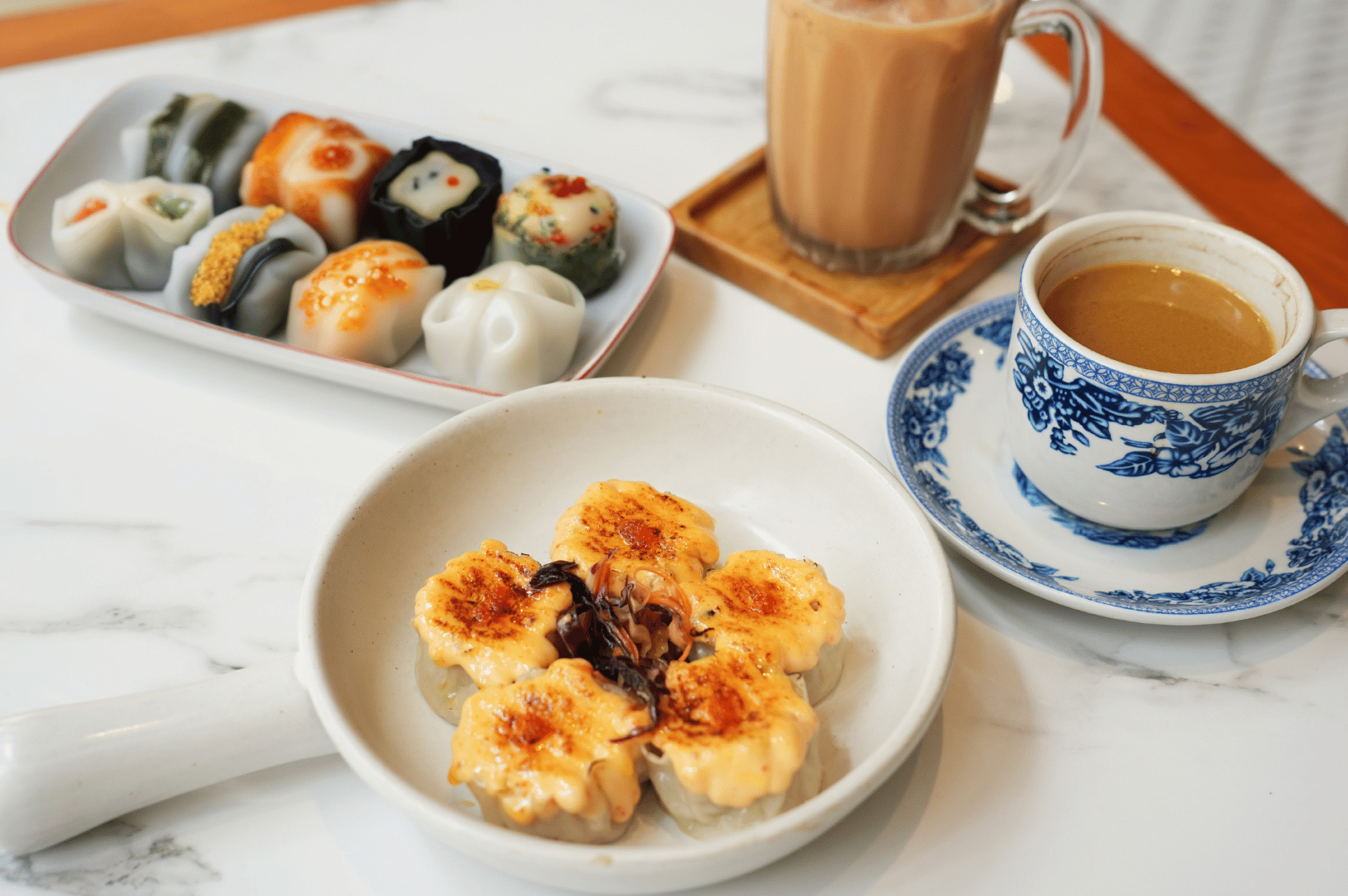
Whether you’re enjoying yum cha with in-laws, friends, or going solo, remember that the best dim sum isn’t just about har gow or siu mai. It’s about savoring food that’s an integral part of Chinese culture, from the bustling tea houses of southern China to the innovative restaurants in major Chinese cities.
So next time you drink tea and scan the dim sum menu, be adventurous—order those golden brown turnip cakes, the fragrant lotus-leaf rice, or slightly sweet custard buns. With each bowl, plate, and cup, you taste a living tradition that spans centuries, offering discovery for every palate.
For more regional delights, try Thailand’s magical butterfly tea or discover the plant-based richness of Gujarati thali.
The Art of Asian Tea Ceremony Traditions: Ancient Rituals and Cultural Values Across Asia
Dio Asahi | November 15, 2025
A cup of tea, in many parts of Asia, represents far more than a beverage-it is a conduit to ancestral tradition, intellectual pursuit, and the cultivation of mindfulness. Asian tea ceremony traditions turn the act of drinking tea into a sophisticated art form, layered with symbolism, philosophy, and socio-cultural values. Each gesture, from scooping powdered…
The Art of Slow-Cooked Curry Recipes: Time’s Magic in South Asian Cuisine
Eda Wong | November 13, 2025
Step into a South Asian kitchen, and the senses are instantly enveloped by the inviting aroma of food slowly simmering in a sturdy clay pot or heavy vessel. The allure is undeniable: in this space, slow-cooked curry recipes are a celebration of patient tradition, spices, and the richness of South Asian cuisine. Here, time and…
Bandung Drink Recipe: A Singaporean Rose Syrup Drink Tradition
Eat Drink Asia Team | November 11, 2025
Step into any night market or hawker centre in Singapore, and you’ll spot a vibrant, glowing glass filled with a cold, beautiful drink-Bandung. Known for its iconic blush-pink hue and refreshing taste, this rose syrup drink is an integral part of Singapore’s beverages scene and a cherished tradition in Southeast Asian gatherings. More than just…
The Ultimate Hainanese Chicken Rice Recipe: A Deep Dive
Eda Wong | November 8, 2025
To wander through Singapore’s bustling hawker centres on a humid evening is to experience a symphony of sights, sounds, and smells. Among the many other dishes sizzling away, one plate stands out for its elegant simplicity: Hainanese Chicken Rice. It arrives without fanfare-gleaming slices of poached chicken over fragrant rice, flanked by a trio of…
Bubble Tea Origins: How Taiwan Created a Global Beverage Phenomenon
Dio Asahi | November 6, 2025
From Taipei to New York, a single drink has captured the world’s taste buds: bubble tea. This beverage, known as pearl milk tea or boba tea, and also known as boba in many regions, is celebrated for its delightful combination of sweet, creamy tea and signature chewy tapioca pearls. What began as a novel creation…
A Food Lover’s Guide to the Taiwanese Oyster Omelet
Eat Drink Asia Team | November 4, 2025
As twilight descends upon Taipei City, a vibrant energy pulses through its streets. This is the hour of the night markets, bustling hubs of community, commerce, and some of the world’s most incredible street food. Amidst the steam from soup dumplings and the sizzle of Taiwanese fried chicken, one iconic dish reigns supreme: the Taiwanese…
Jamu: Indonesian Herbal Medicine for Modern Well-Being
Dio Asahi | November 1, 2025
Across the Indonesian archipelago, a vibrant tradition of herbal healing has flourished for centuries. This is jamu, a cornerstone of Indonesian cultural heritage and a sophisticated system of traditional herbal medicine. Far more than just a refreshing drink, jamu represents a philosophy of balance, a deep connection to nature, and a form of indigenous medicine…
Padang Beef Rendang: The Complex Process Behind Indonesia’s Most Famous Dish
Eda Wong | October 30, 2025
This post may contain affiliate links. For full transparency, this article may contain affiliate links. To call Padang beef rendang simply a dish is to miss the soul of Indonesian cuisine. This legendary slow-cooked dry curry, a centerpiece of both festive tables and humble meals, has earned its fame as one of the world’s most…
Teh Tarik Malaysia: The Art and Science Behind Iconic Pulled Tea
Eat Drink Asia Team | October 28, 2025
In Malaysia, ordering a cup of teh tarik is about so much more than just enjoying a hot drink. Teh tarik, literally translated as “pulled tea,” is Malaysia’s national beverage, famous for its sweet, creamy taste, frothy top, and the spectacular pulling technique seen in bustling mamak stalls and coffee shops across the country. A…
The Legendary Penang Char Kway Teow: A Culinary Journey
Dio Asahi | October 25, 2025
The air in Penang is thick with anticipation, carrying the sounds and smells of Malaysian street food being crafted with expert care. Your attention is captured by one of the many street vendors, a master standing before a seasoned wok glowing over an intense fire. The rhythmic clanging of metal on metal is the soundtrack…

